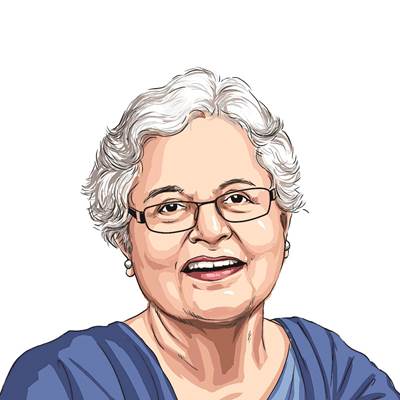Opinion The low in BJPs low-key
It worked no better than the aggressive campaign of 2007 in UP
It worked no better than the aggressive campaign of 2007 in UP
While much has been made of the generational change in leadership in the Congress and the Samajwadi Party in the context of the Uttar Pradesh assembly polls,a similar,though less obvious,metamorphosis has taken place in the BJP as well. Fifty-four-year-old BJP president Nitin Gadkari took control of the campaign and entrusted the nitty-gritty of the election strategy to the rehabilitated RSS pracharak Sanjay Joshi. The partys central leadership in Delhi was out of the loop. The choice of candidates for some 272 assembly seats was made not on the basis of recommendations from local satraps,such as Murli Manohar Joshi,Kalraj Mishra and Rajnath Singh,but on an internal assessment of the winnability of contenders for the party ticket. A Gadkari aide who is barely 30 was entrusted with the selection of candidates for each seat on the basis of his data on caste and other local factors.
Equally significant was the fact that the big names of the BJP central leadership were largely missing from the campaign trail. Narendra Modis absence raised eyebrows. He had absented himself because of his old quarrel with Sanjay Joshi. Even BJP patriarch L.K. Advani,who is accustomed to being acknowledged as a star attraction,was not very visible. Advani seemed peeved that there was no great demand from the local units for his presence. A fiery orator like Sushma Swaraj was showcased only fleetingly. Uma Bharti was projected as the partys prospective chief minister by the Delhi media,but the reality on the ground in UP was quite different.
Eventually,Bharti failed to deliver as many seats to the BJP from Bundelkhand as it had hoped. It is reflective of the low-key BJP campaign in UP that the biggest crowd-puller at party rallies was a man who is not even officially in the party,Babu Singh Kushwaha. The discredited former BSP leader was much in demand since he pulled in the crowds; his OBC followers believed that he had been unfairly targeted.
Clearly,the low-key,localised campaign in this UP election worked no better for the party than its earlier,more aggressive national strategy in 2007. The party won almost the same number of seats as the last time. The only comfort the BJP can take from the outcome is that it won the bronze medal,getting a slightly higher tally than the Congress,which had hyped its hopes because of Rahul Gandhis intensive campaign,with over 150 rallies across the state. On Tuesday,the BJP lost much of its initial euphoria when early counting trends did not match the final results. However,the BJP can take heart from the humiliating defeat of the Congress in UP despite the all-out effort made by Gandhi. At the same time,it must introspect why,unlike the SP,it failed to harness the anti-Mayawati mood to its own advantage. In UP,there was largely a polarisation of the electorate between the SP and the BSP and the two national parties played only a bit role.
The UP results are not a happy one for the BJP,but it has much to celebrate elsewhere,where it proved the pollsters wrong. In Punjab,the BJP has a propaganda edge even if it has returned to power riding on the shoulders of the Akali Dal,with its own strike rate less than that of its ally. In Uttarakhand,B.C. Khanduri put up a sterling fight,even though months earlier the state had been written off for the BJP,owing to the misgovernance and corruption of former CM Ramesh Pokhriyal. In Goa,BJPs Manohar Parrikar profited from the disillusionment with the scandal-scarred Congress government.
However,the BJPs gung-ho calculations that a poor showing by the Congress in this round of assembly polls would lead to early general elections may be off the mark. Self-serving UPA allies and supporters may have no long-term interest in backing a falling star,but the endgame is still a long way off. With the SP set to form the government in UP on its own steam,the Congress has avoided the Hobsons choice of whether or not it should extend support to Mulayam Singh Yadavs party,an issue which has been discussed ad nauseum over the last few days. If Mamata Banerjee were to pull out of UPA 2,the BSP,now in a much-chastened mood after its defeat,could be viewed as a possible lifeline by the UPA.
The more immediate impact of the assembly elections is likely to be on the presidential election in July when the UPA will no longer be in a position to gets its own candidate elected and will per force have to settle for a compromise choice.
express@expressindia.com





